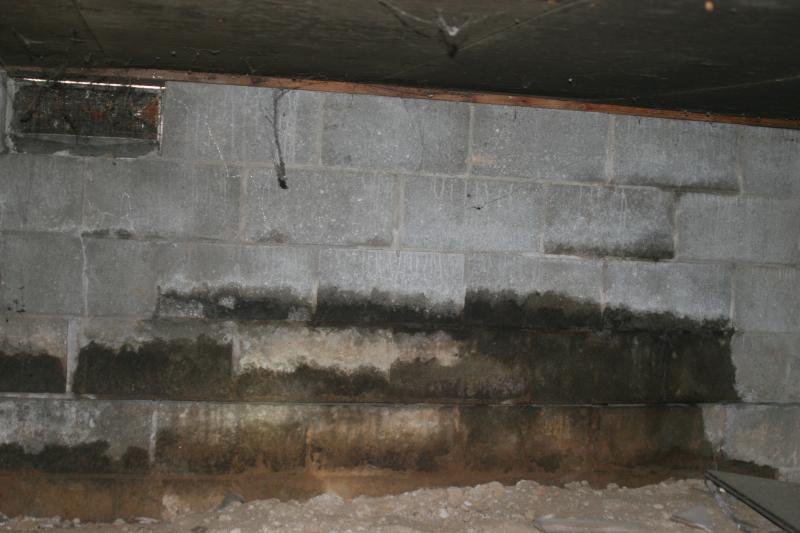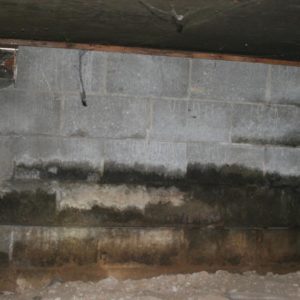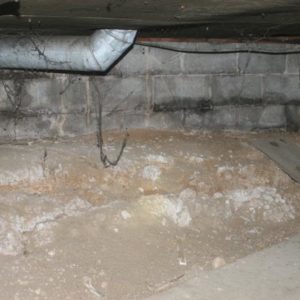I have a question about the sealing the crawl space. Location in Indiana. Home built in the 60s. Brick home. Most of the house has a finished walkout basement. A single room has a crawl space. This measures 14 x 14. The crawl space is vented. There is no access to the crawl space. In preparation for remodeling the room I determined that I should check out the crawl space. I gained access by opening up the floor. The floor joists are 2×16 and 16 inch on centre. What I found was a crawl space that was dry. ( no evidence of water accumulation). Currently we have had a lot of snow and rain. I Also noted that the underside of the floor joists were covered with sheets of plywood. No insulation between the floor joists. Also uninsulated AC ducts in crawlspace.
I had a Company come and give me an opinion about what to do if anything. They recommended encapsulating the crawlspace with 20 mil polyester reinforced material that would be attached to the crawlspace walls. They would also seal the vents to the outside. Further they would seal between the joists leading to the rest of the basement . They do not recommend any insulation between the floor and the sheathing on the underside of the floor joists.
My impression of the crawlspace was that it was clean and dry although some moisture is noted on the block foundation.But no evidence of standing water. No evidence of wood rot.As a matter of fact some of the plywood lying on the ground is as it was 50 years ago.
Also the room is a little colder in winter.
See attached photos. Any expert opinion would be appreciated.






















Replies
What is your company's reason for not recommending that you insulate the floor system of your building envelope? Perhaps they the ones also selling you the energy needed to condition your living space.
He gave as a reason that it was not needed because the area was now encapsulated and that space would be equal to the upstairs. I no it does not make sense to me.No he does not sell energy. I still see no downside to having insulation blown into the joist bays in the floor...but then I am not the expert.Thanks for your interest.
Insulate...yes! Ventilate...yes!
Two ways of looking at this situation: ventilated/unheated crawlspace of enclosed/heated crawlspace.
Vented Crawlspace A typical vented crawlspace has insulation between the floor joists, vapor barrier attached to the bottom of the joists, vapor barrier on the ground and adequate ventilation to provide air circulation through the space.
Enclosed or Heated Crawlspace A typical enclosed or heated crawl space would have insulation on the ground and the walls of the crawlspace (afterall, this is now going to be heated space), then a continuous, sealed vapor barrier across the floor and up the walls to encapsulate the space. In this case outside ventilation is the enemy. Because you have insulated the walls and floor of the crawlspace, insulation of the floor joists is not necessarily needed - the crawlspace is now part of the heated building envelope. However, that doesn't mean you don't need ventilation in this space...it can still build up moisture and needs some ventilation - only now you can use indoor air. Essentially you are creating an extension of your basement space . This solution has no ability to remove water/moisture from behind the vapor barrier without additional drainage..
What would I do in your case? You already have a ventilated space and clearly have some issues with moisture or water on the inside of the block. I would opt for a vented space - I just wouldn't feel comfortable with tthat much moisture buiidup behind the encapsulated vapor barrier.
• Insulation: I would insulate the floor and install a vapor barrieir under the joist. I've never heard of anyone blowing insulation into a floor joist space, but I don't see why you couldn't - i would be worried about the plywood eventually dropping (has no weight on it now). You need to seal and insulate the ductwork and any water piping as well. Also, you need to insulate the wall between the crawl space and the finished basement space.
• Ventilation: I would not seal the vents...clearly there is moisture coming through the block and it needs to be able to evaporate and one way to do it is through adequate crawl space ventilation. BTW, looks like yours need to be cleaned.
• Vapor Barrier: I would install a vapor barrier under the floor joist as stated above and over the dirt to slow any additional water vapor from entering thes crawlspace. The vapor barrier on the dirt can extend up the block wall 6" or so and I would anchor it at perimeter with crushed rock or gravel. It's not meant to be a complete seal, just a deterent to excess water vapor in the crawl space.
• Access: I would provide some way to acces this space...better from inside so you don't have to worry about critters...any way to build an access panel from the basiement space?
Just my opinion....
Crawlspace Design Principles
Please don't follow some of the unsupported blind opinions offered here.
There is a scientific answer available. Start here:
http://www.buildingscience.com/documents/information-sheets/crawlspace-insulation
http://www.buildingscience.com/documents/insights/bsi-009-new-light-in-crawlspaces
http://www.buildingscience.com/documents/bareports/ba-0401-conditioned-crawlspace-construction-performance-and-codes
Encapsulate your crawlspace, CLOSE all vents to the exterior, and add foamboard insulation to your crawlspace walls.
Billy
Moisture on wall
Is there any concern for what appears to be water seeping through the block walls?? Best practice here calls for insulated floor, proper venting and perimeter drainage to remove rain/ground water. Also, those ducts should be insulated.